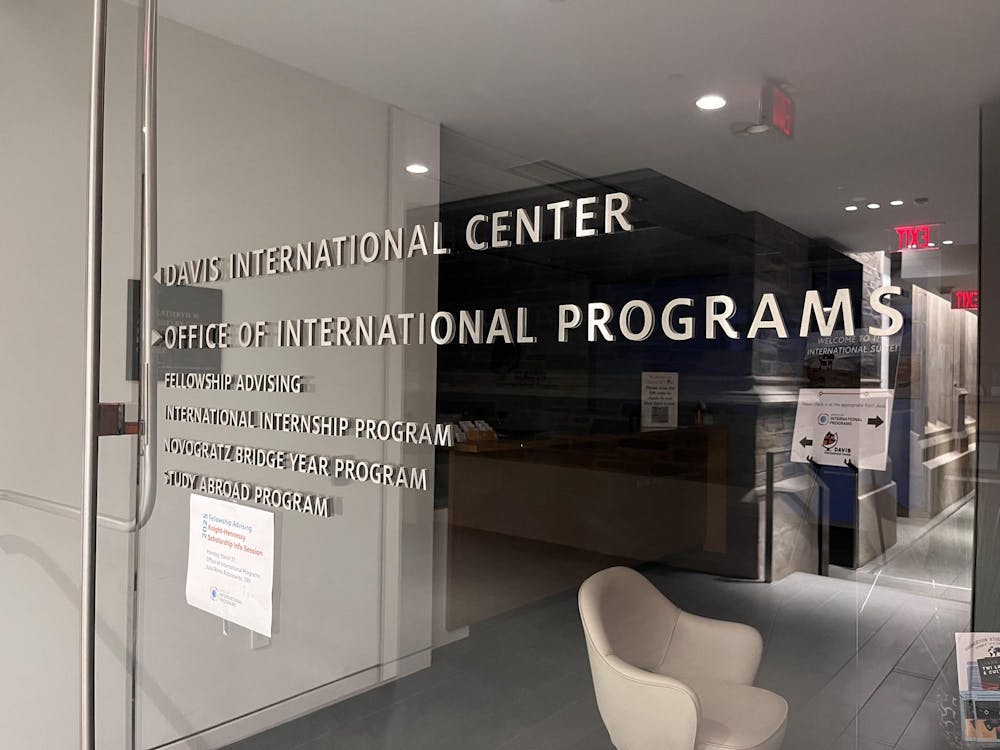Boasting sleek boxes of electronic wizardry, students roam the University campus and its many buildings expecting to connect instantly with friends and family around the world. Yet as antennae are raised and the promise of crystalclear communication beckons, cellular telephones used on campus often seem to produce only a frustrating crackle.
Despite the technological sophistication of the University and the local community, Princeton is notorious for inadequate cellular coverage. Princeton Borough has been a target of cellular and other wireless companies for years, even offering one Palm Pilot coverage zone, but providing service has been difficult.
"We would love to have blanket coverage of the campus and local communities and have been trying for many years to get it," said Larry McDonnell, Sprint Northeast Region Director of Public Relations. "It is extremely difficult to site wireless antennas in historic communities such as Princeton."
Yet Princeton's historic nature may be only one of the reasons for the difficulty. Princeton Borough Council has had cellular tower construction under consideration since late 1997. Local service — including many police, fire and emergency communications — is currently dominated by a temporary tower adjacent to Borough Hall, according to Princeton Borough Mayor Marvin Reed.
"There is a temporary tower over by Borough Hall, but we want to replace that," Reed said. "We've been evaluating a monopole that could provide service to the community. It would give the police new services and hold antennae for several phone companies — a concept known as co-location."
The council, however, has not yet found a suitable construction firm to begin the process and is now considering other municipal lands to house cellular antennae. The Borough is focusing on municipal lands to avoid conflicts with environmental zoning laws as well as community concern over cellular tower location.
"In order to avoid the zoning problems, we want to find suitable municipal land," Reed said. "[Several cellular companies] are also looking for other sites. Usually they have to apply for permits and get planning board approval."
One new location under consideration is the Princeton Medical Center. Cellular antennae, which are only about a foot in length, require high placement and limited line-of-sight obstructions. Several preliminary steps remain to allow for antenna placements at PMC, Reed said.

Cellular companies, however, are increasingly frustrated with the lengthy process associated with planning boards and permits.
Sprint officials were forthright and admitted that service in the Princeton area is not as good as it should be.
"The funding is in place and we're ready and eager to provide superior service on campus and in the Princeton community," McDonnell said. "We often can locate sites on a number of existing structures and in some instances even disguise them in church steeples. The point is we will work with the college and local planners to put the sites in locations that work for everyone."
Though the regulatory process in Princeton has moved slowly, Reed said cellular antennae will likely sprinkle the campus and community's highest points in the next few years.

As local service demands and the number of calls increase, cellular companies must continue to negotiate new locations and new sites for their equipment.
"The reality is students suffer when they have limited choices for wireless services," said McDonnell. "If we can remove some of the roadblocks on antenna siting we can bring the nation's best all digital service to the campus very rapidly."
If McDonnell and others in the industry have their way, the frustrating crackle of students' latest gadgets may soon fade away.
Verizon Wireless and AT&T Wireless public relations officials did not respond or were unavailable for comment yesterday.







